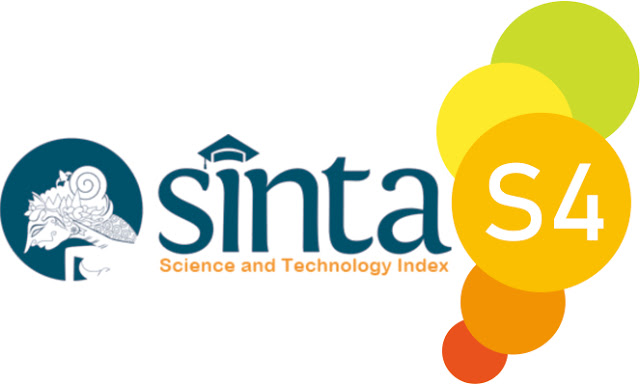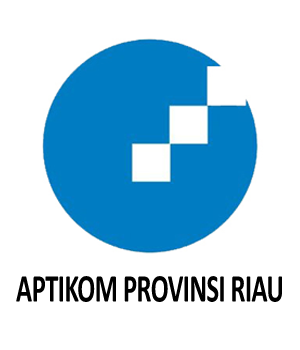The Relationship Between Age, Parity, Ideal Weight, and Blood Pressure in Diagnosing Hypertension in Pregnant Women Using The K-Means Algorithm
Abstract
Hypertension is one of the health problems that often arise during pregnancy and can cause complications in 2-3% of pregnancies. Hypertension In Pregnancy (HDK) is defined as a blood pressure of ≥140/90 mmHg in two or more measurements. Data mining is a combination of a number of computer science disciplines that is defined as the process of discovering new patterns from very large data sets. By looking at records on Age, IMT, Parity / Gravidity, and Blood Pressure and analysis with K-Means clustering, it can be seen that the similarity of values of the above variables ultimately forms patterns related to hypertension in pregnant women. The clustering process using 5 clusters according to the elbow chart analysis. In this study, it was seen that the variable Blood Pressure is the same pattern and often appears in each cluster. While hypertension occurs in 1 cluster out of 5 existing clusters.
Downloads
References
N. Masruroh, A. P. R. Santoso, W. Thoyyibah, and R. A. Laloda, “Hubungan Body Mass Index dan Protein Urine Terhadap Kejadian Hipertensi Pada Ibu Hamil Trimester III,” JIDAN (Jurnal Ilmiah Bidan), vol. 8, no. 1, 2021, doi: 10.47718/jib.v8i1.1200.
N. Schellack and N. Padayachee, “Hypertension,” SA Pharmaceutical Journal, vol. 89, no. 1. 2022. doi: 10.29309/tpmj/2016.23.12.1795.
L. A. Magee and P. Von Dadelszen, “Management of hypertension in pregnancy,” Maternal-Fetal Medicine, vol. 3, no. 2. 2021. doi: 10.1097/FM9.0000000000000095.
T. Arikah, T. B. W. Rahardjo, and S. Widodo, “Kejadian Hipertensi pada Ibu Hamil,” Jurnal Penelitian dan Pengembangan Kesehatan Masyarakat Indonesia, vol. 1, no. 2, 2020, doi: 10.15294/jppkmi.v1i2.40329.
Eneng Emi Saputri, H.A.Y.G Wibisono, Septy Ariani, and Fenie Waty, “Hubungan Perilaku Gaya Hidup Dengan Hipertensi Ibu Hamil Di Rsu Kota Tangerang Selatan Tahun 2019,” Jurnal Kesehatan, vol. 8, no. 2, 2019, doi: 10.37048/kesehatan.v8i2.135.
Dinas Kesehatan Kabupaten Kampar, “Renstra kesehatan kampar 2022,” 2022.
J. M. Flack and B. Adekola, “Blood pressure and the new ACC/AHA hypertension guidelines,” Trends in Cardiovascular Medicine, vol. 30, no. 3. 2020. doi: 10.1016/j.tcm.2019.05.003.
T. Unger et al., “2020 International society of hypertension global hypertension practice guidelines,” Journal of Hypertension, vol. 38, no. 6. 2020. doi: 10.1097/HJH.0000000000002453.
K. P. Sinaga and M. S. Yang, “Unsupervised K-means clustering algorithm,” IEEE Access, vol. 8, 2020, doi: 10.1109/ACCESS.2020.2988796.
A. Janßen and P. Wan, “k-means clustering of extremes,” Electron J Stat, vol. 14, no. 1, 2020, doi: 10.1214/20-ejs1689.
M. Ahmed, R. Seraj, and S. M. S. Islam, “The k-means algorithm: A comprehensive survey and performance evaluation,” Electronics (Switzerland), vol. 9, no. 8. 2020. doi: 10.3390/electronics9081295.
M. Gbededo, M. Stone, P. Beaver, and Y. J. Lee, “Assessing current and potential basin assets using an innovative predictive analytics workflow,” in SPE Western Regional Meeting Proceedings, 2017. doi: 10.2118/185673-ms.
C. Schröer, F. Kruse, and J. M. Gómez, “A systematic literature review on applying CRISP-DM process model,” in Procedia Computer Science, 2021. doi: 10.1016/j.procs.2021.01.199.
T. H. A. S. Siriweera, I. Paik, B. T. G. S. Kumara, and K. R. C. Koswatta, “Intelligent Big Data Analysis Architecture Based on Automatic Service Composition,” in Proceedings - 2015 IEEE International Congress on Big Data, BigData Congress 2015, 2015. doi: 10.1109/BigDataCongress.2015.46.
S. S. Yu, S. W. Chu, C. M. Wang, Y. K. Chan, and T. C. Chang, “Two improved k-means algorithms,” Applied Soft Computing Journal, vol. 68, 2018, doi: 10.1016/j.asoc.2017.08.032.
A. Likas, N. Vlassis, and J. J. Verbeek, “The global k-means clustering algorithm,” Pattern Recognit, vol. 36, no. 2, 2003, doi: 10.1016/S0031-3203(02)00060-2.
J. Y. Islam, M. M. Zaman, S. A. Haq, S. Ahmed, and Z. Al- Quadir, “Epidemiology of hypertension among Bangladeshi adults using the 2017 ACC/AHA Hypertension Clinical Practice Guidelines and Joint National Committee 7 Guidelines,” J Hum Hypertens, vol. 32, no. 10, 2018, doi: 10.1038/s41371-018-0087-5.
Dinas Kesehatan Provinsi Riau, “Profil Kesehatan Provinsi Riau Tahun 2020,” 2021.
B. A. Jaafar, M. T. Gaata, and M. N. Jasim, “Home appliances recommendation system based on weather information using combined modified k-means and elbow algorithms,” Indonesian Journal of Electrical Engineering and Computer Science, vol. 19, no. 3, 2020, doi: 10.11591/ijeecs.v19.i3.pp1635-1642.
P. Bholowalia and A. Kumar, “EBK-Means: A Clustering Technique based on Elbow Method and K-Means in WSN,” Int J Comput Appl, vol. 105, no. 9, 2014.
Mustakim, “Centroid k-means clustering optimization using eigenvector principal component analysis,” J Theor Appl Inf Technol, vol. 95, no. 15, 2017.
F. Azmi, K. Utama, O. T. Gurning, and S. Ndraha, “Initial Centroid Optimization of K-Means Algorithm Using Cosine Similarity,” JOURNAL OF INFORMATICS AND TELECOMMUNICATION ENGINEERING, vol. 3, no. 2, 2020, doi: 10.31289/jite.v3i2.3211.
E. Aytaç, “Unsupervised learning approach in defining the similarity of catchments: Hydrological response unit based k-means clustering, a demonstration on Western Black Sea Region of Turkey,” International Soil and Water Conservation Research, vol. 8, no. 3, 2020, doi: 10.1016/j.iswcr.2020.05.002.
F. A. Setiawan, M. Sadikin, and E. R. Kaburuan, “Analisis Permasalahan Perangkat Pencetak Menggunakan Metode Algoritma K-Means dan K-Medoids,” Teknika, vol. 11, no. 2, 2022, doi: 10.34148/teknika.v11i2.471.
K. R. Shahapure and C. Nicholas, “Cluster quality analysis using silhouette score,” in Proceedings - 2020 IEEE 7th International Conference on Data Science and Advanced Analytics, DSAA 2020, 2020. doi: 10.1109/DSAA49011.2020.00096.
Copyright (c) 2023 Hendry Ponda, Uci Rahmalisa

This work is licensed under a Creative Commons Attribution-ShareAlike 4.0 International License.
This is an open-access article distributed under the terms of the Creative Commons Attribution-ShareAlike 4.0 International License which permits unrestricted use, distribution, and reproduction in any medium. Users are allowed to read, download, copy, distribute, search, or link to full-text articles in this journal without asking by giving appropriate credit, provide a link to the license, and indicate if changes were made. All of the remix, transform, or build upon the material must distribute the contributions under the same license as the original.















